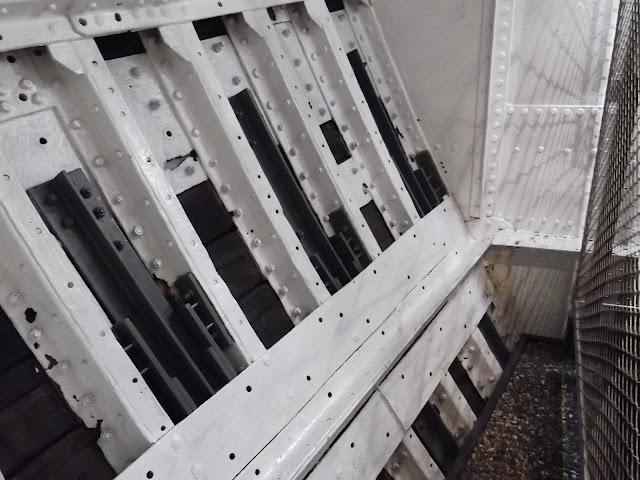Thursday, 5 September 2013
Monday, 1 August 2011
Bayernwald Trenches, Messine Ridge - Passchendaele
The Bayernwald trenches, near Wytschaete, in the Ypres Salient, were discovered and excavated, in the 1970s, by a local teacher and amateur archaeologist, Andre Becuart. Since his death in 1986 the recontructed trenches had fallen into dis-repair but upkeep has been taken on by the local authority. Entrance is through a coded lock, the pin for which is issued by the Kemmel Tourist Office when tickets are purchased.
Dug by the Germans in the winter of 1914/15, these are front line trenches leading in a more or less straight line to St Eloi to the North East and curving round towards the West of Wytschaete to the South.
1916 German trench maps show strong points (Anna & Berta) approximately at each end of the current bus parking bay on the nearby road. Further to the South West, at Hollandscheshur farm, was a further strongpoint, Gunther, destroyed at 3:10 am on the morning of the 7th June 1917 whan three of the nineteen mines fired at the opening of the battle of Messines were exploded under it.
Bayernwald now remains partly un-renovated within the wire. Care should be taken when exploring, there are two mine shafts still in place (both easy to see).
Dug by the Germans in the winter of 1914/15, these are front line trenches leading in a more or less straight line to St Eloi to the North East and curving round towards the West of Wytschaete to the South.
1916 German trench maps show strong points (Anna & Berta) approximately at each end of the current bus parking bay on the nearby road. Further to the South West, at Hollandscheshur farm, was a further strongpoint, Gunther, destroyed at 3:10 am on the morning of the 7th June 1917 whan three of the nineteen mines fired at the opening of the battle of Messines were exploded under it.
Bayernwald now remains partly un-renovated within the wire. Care should be taken when exploring, there are two mine shafts still in place (both easy to see).
Shelling shelters
Monday, 25 July 2011
Libby's trip to the Battlefields of WW1 - Part 1
Beaumont Hamel - Newfoundland Park
The Beaumont-Hamel Newfoundland Memorial is a memorial site in France dedicated to the commemoration of Dominion of Newfoundland forces members who were killed during World War I. The 74-acre (300,000 m2) preserved battlefield park encompasses the grounds over which the Newfoundland Regiment made their unsuccessful attack on 1 July 1916 during the first day of the Battle of the Somme. [1]
Y Ravine
The Y ravine had been the scene of fierce fighting for the division on 13 November 1916
The Beaumont-Hamel Newfoundland Memorial is a memorial site in France dedicated to the commemoration of Dominion of Newfoundland forces members who were killed during World War I. The 74-acre (300,000 m2) preserved battlefield park encompasses the grounds over which the Newfoundland Regiment made their unsuccessful attack on 1 July 1916 during the first day of the Battle of the Somme. [1]
The Battle of the Somme was the regiment's first major engagement, and during an assault that lasted approximately 30 minutes the regiment was all but wiped out. Purchased in 1921 by the people of Newfoundland, the memorial site is the largest battalion memorial on the Western Front, and the largest area of the Somme battlefield that has been preserved. Along with preserved trench lines, there are a number of memorials and cemeteries contained within the site.
Officially opened by British Field Marshal Earl Haig in 1925, the memorial site is one of only two National Historic Sites of Canada located outside of Canada. The memorial site and experience of the Newfoundland Regiment at Beaumont-Hamel has come to represent the Newfoundland First World War experience. As a result, it has become a Newfoundland symbol of sacrifice and a source of identity.
29th Division Memorial
Preserved Battlefield
The reason the trenches are roped off, is because there are so many unexploded shells. In Northern France some 35 people are killed or injured annually by exploding shells.The Y ravine had been the scene of fierce fighting for the division on 13 November 1916
Sunday, 5 June 2011
Subscribe to:
Comments (Atom)



































































